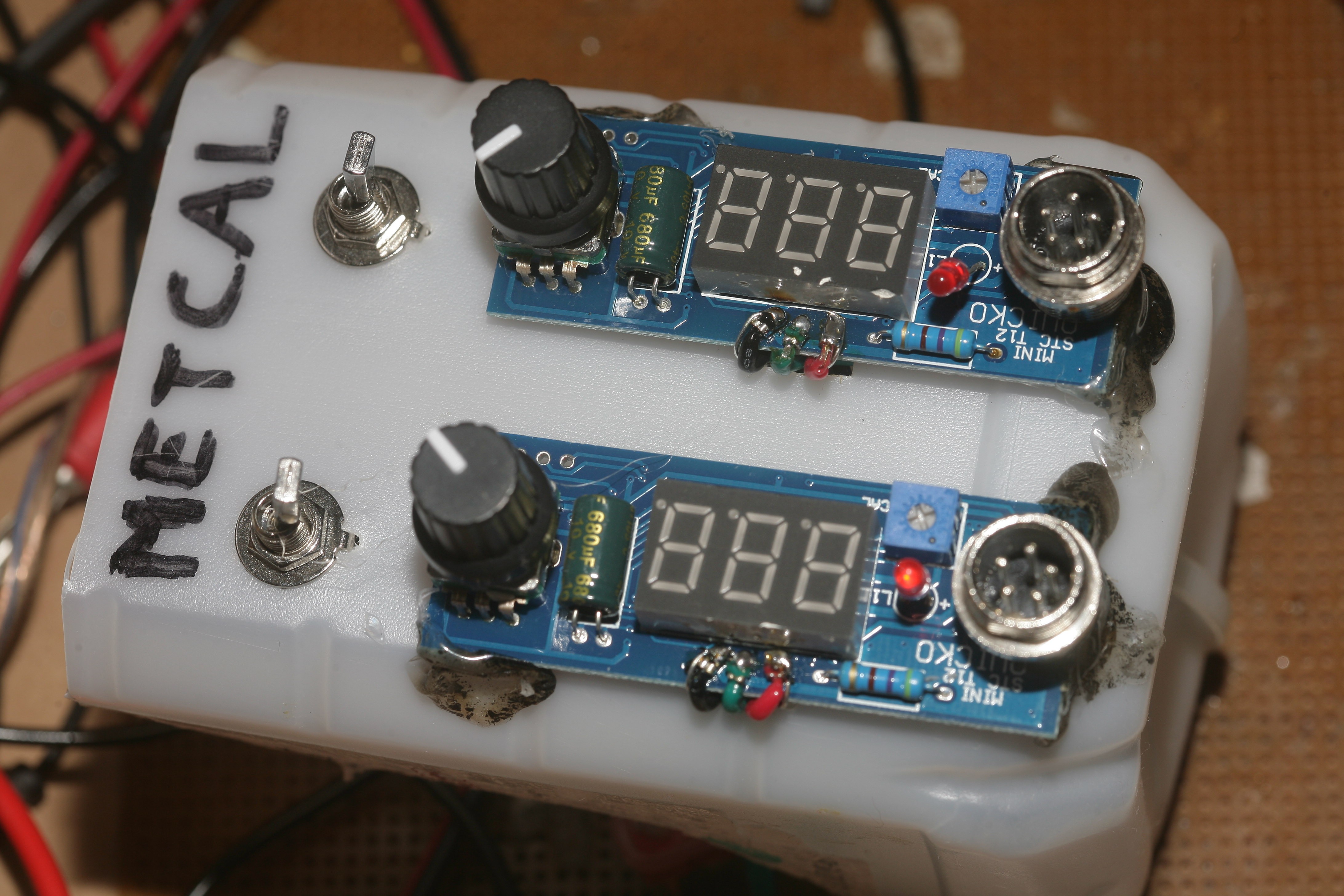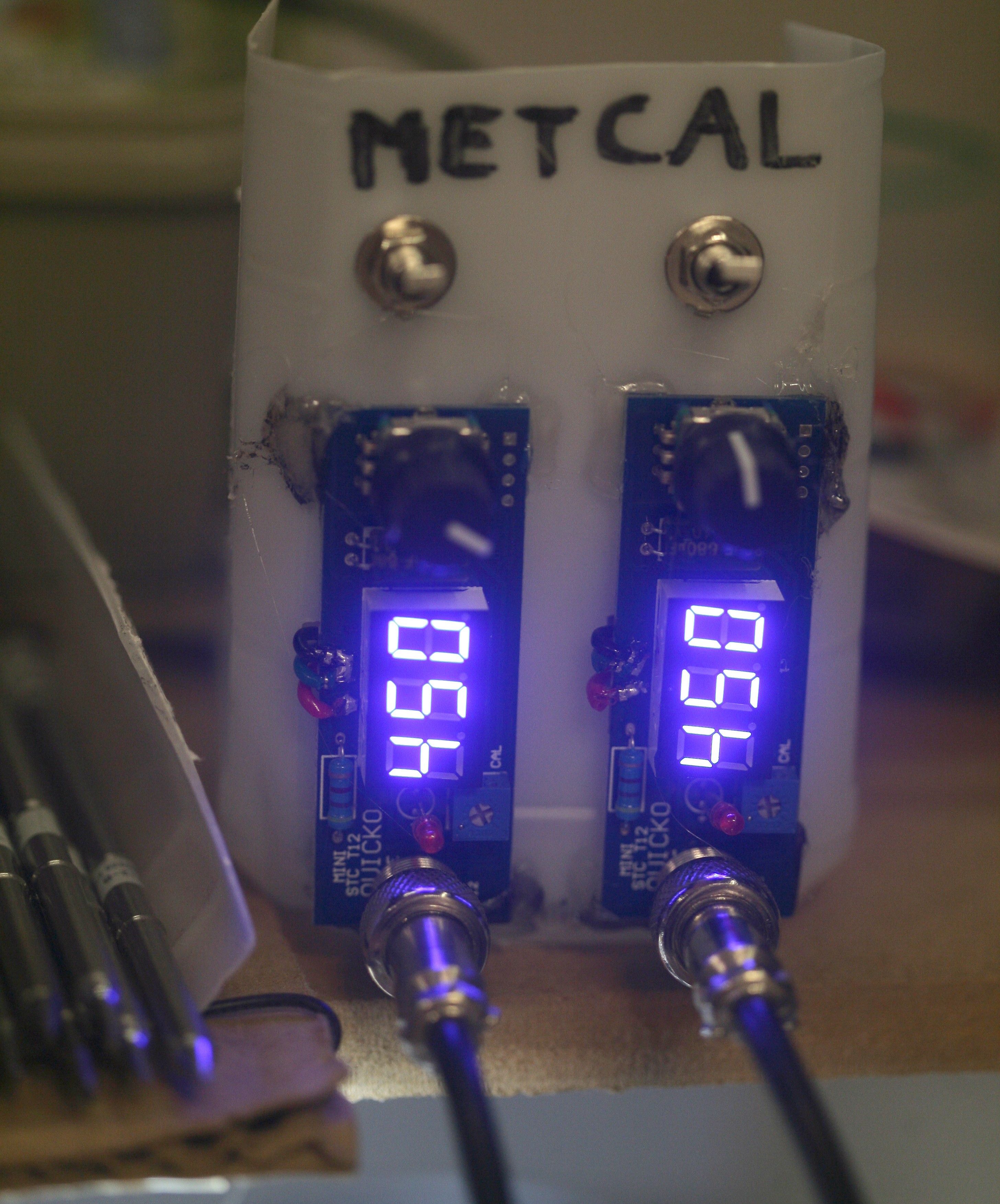After an uneventful year, some 1.1V chips started turning up zapped. The prime suspect was the T-12 not having grounded tips. Previously, the tips were connected to each other but not a ground. This caused glitching temperatures when both tips were on, so they were made floating. Decided to ground the tips to Earth ground like other irons & the chips stopped getting zapped. So the answer is yes, the tips need to be Earth grounded.
A voltage test showed 5V AC between the tips & ground. A current test showed the tips sending 100uA AC to ground when they were both heating. The problem is there's a capacitance between the heater & the surface. It conducts current when the heater is driven by pulses. This is the downside to having the heating element integrated in the tip, instead of a ceramic piece in the venerable FX-888.
The temperature readouts once again glitched around when the tips were connected to earth ground. When grounded, the glitching was equal if 1 or 2 were on. When the heating element was off & the temperature was freefalling, 1 or 2 tips still glitched. Removing the ground immediately stabilized the temperature of either 1 or 2 tips freefalling.
With no earth ground & both tips connected, the glitching only happened if both tips were on.
So the effect of earth ground is the same as the effect of another tip being powered.
When the tips were floating, their mane use case was soldering 2 pins of the same component. Most of the time, they were conducting through the component & glitching the same as if they were connected to each other. So there was no practical benefit to having the tips floating.
The internet as usual was random. The eevblog recommended replacing the pin header with direct soldering to get the temperatures to stabilize.
https://www.eevblog.com/forum/reviews/t2-soldering-iron-clone-kit/
Helas, the eevblog revealed a lot more problems than just what lions experienced.


Installed caps & directly soldered the wires, but it didn't show any improvement. The irons do indeed get more unstable the higher they go, until they're completely useless at 450C.
The eevblog blamed cable length for some of the instability, but lions think the PID gains are off & they're not lowpass filtering the temperature. There was also an idea of shorting the STC 12's DC- & earth ground instead of using manes earth at all. Meanwhile,
https://www.aliexpress.com/item/32834505634.html
recommended connecting STC T12's DC- to manes earth ground & manes neutral while not using the STC T12's earth ground at all.
The lion kingdom has an isolated DC- which can't be used for grounding the tips.
He documented the menu system, but it doesn't allow changing the PID gains.
Newer irons are always emerging, with choked up handles & maybe fixed temperature sensing, but the trend is for guys to keep buying upgrades for these low cost JBC replacements until they've spent as much as a JBC.
The op-amp gain & op-amp offset were signs of a voltage to read the temperature off of.
The STC T-12 has also been used on 12V battery power. It's extremely slow on 12V & can't heat much mass, but still suffers from the instability. There's also the problem of grounding it on battery power. You'd need a bodged ground wire.
Given the fact that current is leaking from DC+ to earth ground from capacitance in the tip, lions want all the current from DC+ going down DC- instead of earth ground, & DC- is isolated from manes neutral, the best solution is just shorting earth ground, DC-, & the tip. DC- won't be isolated anymore, but that's physics, marriage, & taxes.

With that solution, they did 450C with no glitching, no extra capacitors, & no special cables. Most power supplies are floating, so grounding DC- might be the most ideal way to power these.
 lion mclionhead
lion mclionhead
Discussions
Become a Hackaday.io Member
Create an account to leave a comment. Already have an account? Log In.